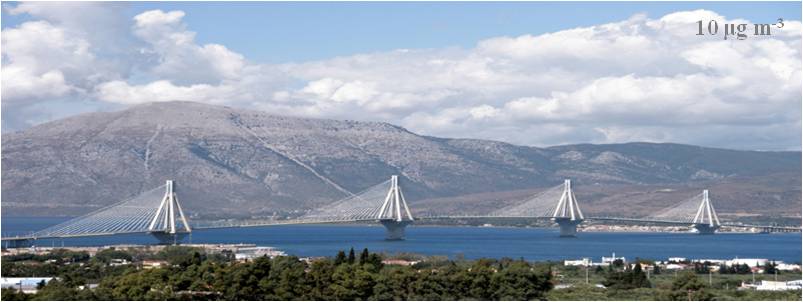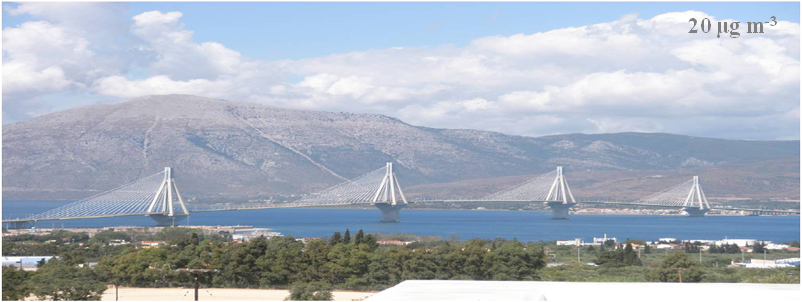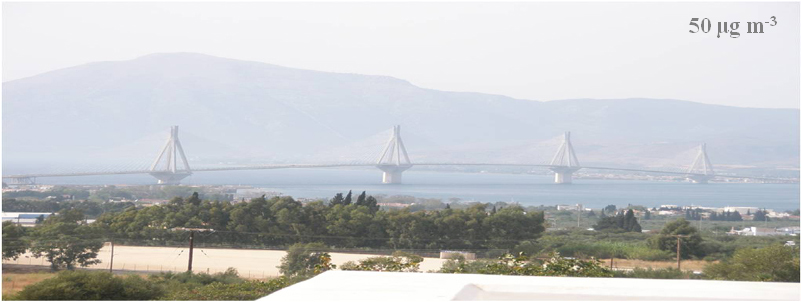Research Facilities
| General Information | |
|---|---|
| Access Mode: | Physical Access |
| Infrastructure Name: | FORTH Mobile Atmospheric Simulation Chamber (FORTH-MSC) |

| Website: | http://laqs2.iceht.forth.gr/research-facilities/experimental-facilities/laboratories |
|---|---|
| Operating Organization: | Foundation for Research and Technology Hellas, Institute of Chemical Engineering Sciences (FORTH/ICEHT) |
| Description of the Infrastructure | |
| Brief Description: | |
| The portable dual-smog-chamber system consists of two identical pillow-shaped chambers (1.5 m³ each), surrounded by sixty UV light lamps in a hexagonal arrangement. The lamps can be operated remotely at different levels. The spectrum of the lights peaks in the 350–400 nm region. The chambers are easily transportable and include sampling ports, RH, and temperature sensors. Sampling is alternated between chambers every 3 minutes. | |
| Services Offered: | |
| – Atmospheric “perturbation” experiments. – Chemical aging experiments for primary and secondary organic aerosol. – Ambient nucleation experiments. | |

| Typical Duration: | Between 2 and 4 weeks, including preparation, experimentation, and data sharing. |
|---|---|
| Community/User Type Served: | Primarily academic sector, but also available for private and government use. |
| Logistic & Administrative Support: | Assistance with transport, installation, troubleshooting, repairs, and local accommodations. |
| Physical Description: | Frame dimensions: 1.7m×0.5m×1.7m. UV light structure: 4.5m×4.5m footprint, 2.5m height. Each chamber: 1.5m³ volume. Lights: remotely operated at 20%, 40%, 60%, 80%, and 100% levels. JNO2: 0.1 min−1 with all lights on. Lights’ spectrum peaks: 350–400 nm. UV lights heat to approximately 50 °C. Bellows pump: 80 L min−1 per head to fill chambers with ambient air. |
| Person in Charge: | Prof. Spyros Pandis, spyros@chemeng.upatras.gr |
The indoor smog chamber facility located at the Institute of Chemical Engineering has been carefully designed and constructed to provide the means for studying important atmospheric processes such as particle formation, photochemical aging and secondary organic aerosol formation.
The indoor smog chamber facility is a 30 m3 temperature controlled room that can host custom-made Teflon smog chambers of variable sizes (up to 12 m3). The chamber room has aluminum coated walls and is equipped with a series of black light lamps that emit in the wavelength range between 300 and 450 nm and have the ability to simulate sunlight conditions that range from a very sunny day (JNO2 = 0.6 min-1) to a partially cloudy day (JNO2 = 0.2 min-1). A suite of state-of-the-art instrumentation is used to follow both the gas (PTR-MS, O3 and NOx monitors etc.) and aerosol phase (HR-ToF-AMS, SMPS, CCNc etc.) processes inside the smog chamber.
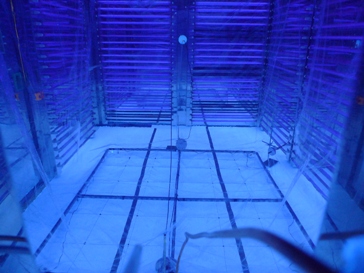
The main laboratory of LAQS is located at the Institute of Chemical Engineering (ICE/FORTH) around 1 km away from the University of Patras. The main scientific objectives of the laboratory are to study the physical and chemical properties of atmospheric particles and gases, related to atmospheric pollution. The laboratory is equipped with a variety of instrumentation appropriate for the measurement of chemical composition, the mass concentration, size, volatility, water solubility, hygroscopicity of atmospheric particles and the monitoring of certain gases. A series of controlled (in a smog chamber) and uncontrolled (ambient) experiments and measurements are conducted in order to investigate the corresponding atmospheric processes. Current studies are focusing on:
- The investigation of emissions from wood burning and their atmospheric processing
- The properties of biogenic and anthropogenic pollutants and their oxidation products
- Oxidation mechanisms of gaseous species and secondary organic aerosol formation and aging
- Evaluation of photochemical mechanisms
- Exploration of chemical composition, gas/particle partitioning, hygroscopicity and volatility of SOA
- Formation and growth of nanoparticles
Volatility Measurements with Thermodenuder
The Thermodenuder is an instrument used for the measurement of the volatility of atmospheric aerosol coupled with a High-Resolution Aerosol Mass Spectrometer (HR AMS) and/or a Scanning Mobility Mass Spectrometer (SMPS). Details about the design and the performance of our Thermodenuder can be found in An et al. (2007).

(An W. J., R. K. Pathak, B. H. Lee, and S. N. Pandis (2007): Aerosol volatility measurement using an improved thermodenuder: Application to secondary organic aerosol, J. Aeros. Sci., 38, 305-314)
Temperature-controlled laminar flow reactor
The reactor is a 4 m long tube consisting of 2 concentric cylinders. Water with the desired temperature circulates in the cylindrical annulus. The aerosol used in the experiment flows along the inner cylinder. There are five sampling ports along the reactor. The reactor is used for aerosol growth and evaporation experiments.
This laboratory is located in the Chemical Engineering Department of the University of Patras. It is used for analysis of filter samples collected throughout the various sampling sites. GC-MS analysis for the characterization of the organic compounds of the aerosols and Thermal Optical Analysis for the characterization of the Organic (OC) and Elemental Carbon (EC) are performed there.
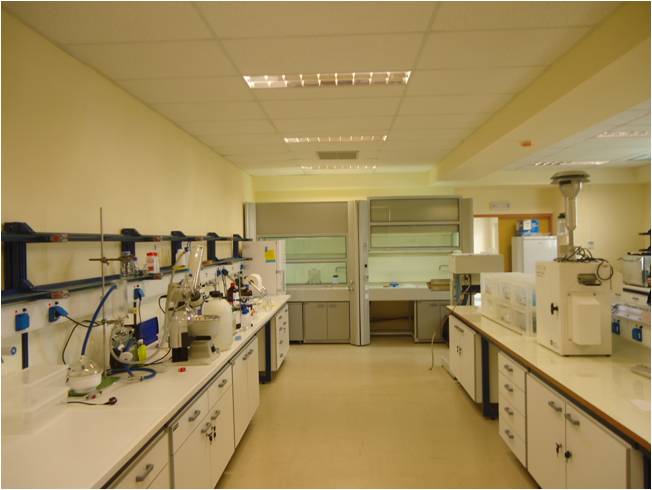
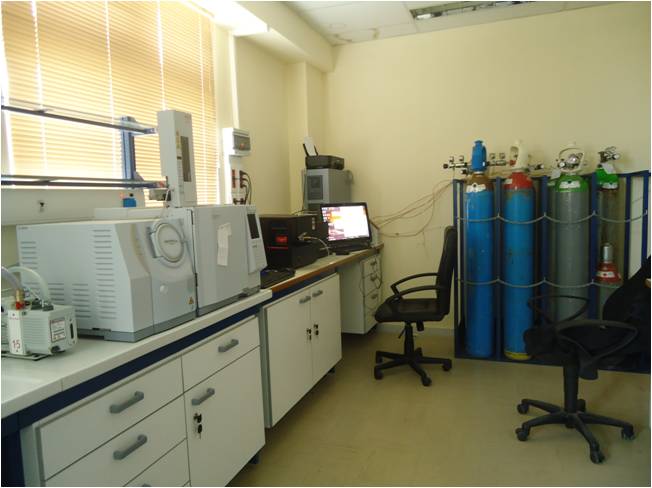
The Finokalia station is located at a remote coastal site in the northeast of Crete (35° 20’N, 25° 40’E and 250m above sea level). The site is isolated and far away from anthropogenic emissions, and therefore allows the study of aerosols originated from Europe, Balkans, Africa, as well as marine aerosol. Due to the high photochemical conditions the Finokalia station is an ideal location to study the aging of the organic aerosol as well. The LAQS group has participated in three field campaigns at the Finokalia site: FAME-08, FAME-09 and FAME-11. The station is run by the Environmental Chemical Processes Laboratory of the University of Crete (ECPL) and it is part of the EUSAAR and ACTRIS Network and reports to the EMEP database.
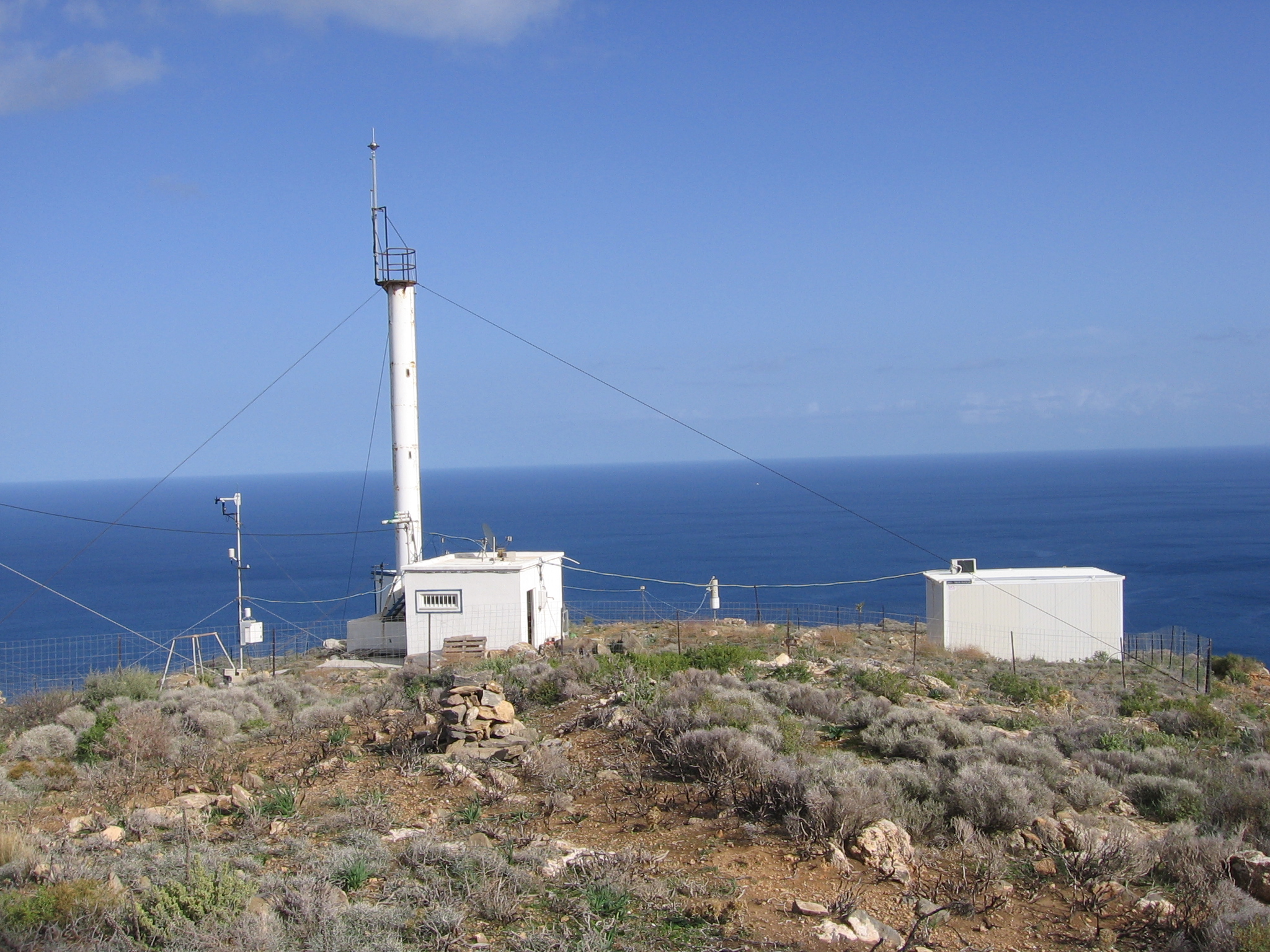
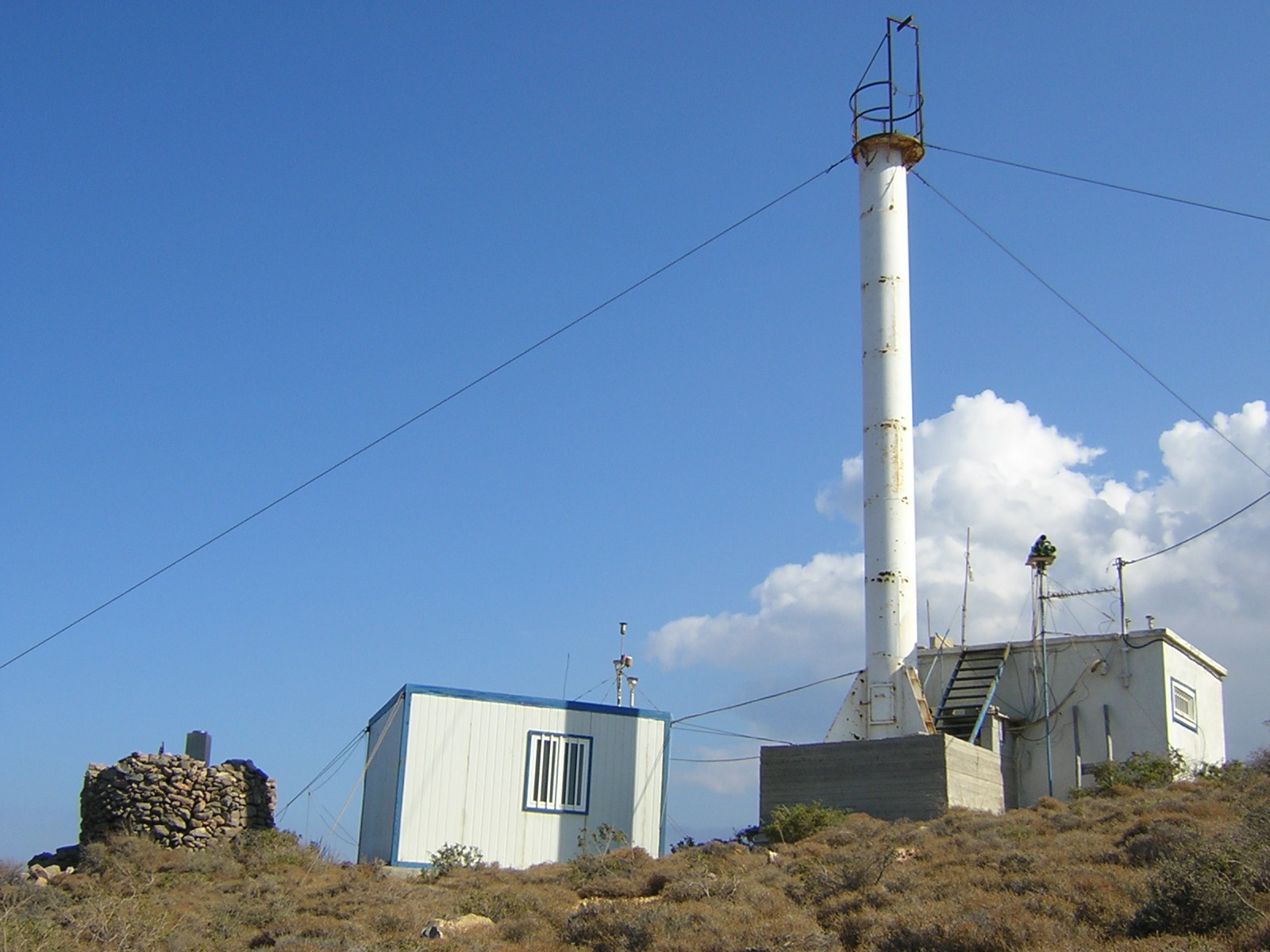
LAQS has developed and commissioned a Mobile Laboratory (Mercedes-Benz Sprinter light duty van) for air quality monitoring and field experiments using mobile smog chambers. The laboratory has a flexible design allowing the use of different instrumentation depending on the measurement objectives.
The LAQS Mobile Lab is equipped with a number of monitors for gas-phase (CO, NO, NO2, O3, SO2, Volatile Organic Compounds using a PTR-MS) and particle-phase (size distribution, mass/composition distribution using an Aerosol Mass Spectrometer, black carbon) pollutants and their properties (scattering, absorption, volatility).
It can be used as fixed monitoring station, a mobile measurement platform or as an actual mobile laboratory allowing performance of smog chamber experiments in the field using ambient air.
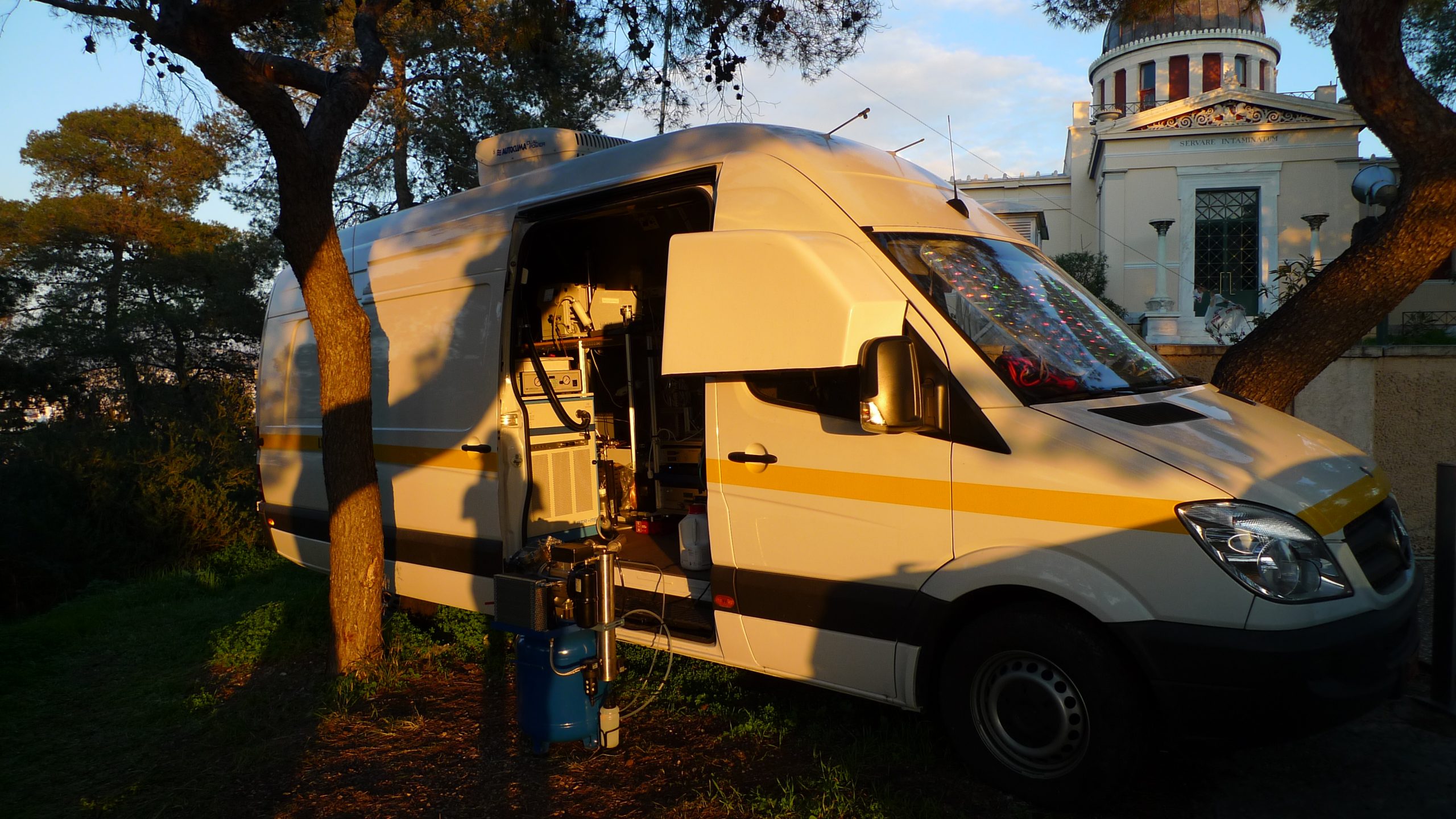
High-Performance Computing Cluster in FORTH/ICE-HT
FORTH/ICE-HT has set up a High-Performance Computing Cluster that includes a large number of powerful multicore nodes, a significant amount of memory in each node, a high-bandwidth interconnect between the nodes, optimizing compilers, and a growing set of application software.
The ICE-HT Cluster is heavily used in a variety of research fields, including air quality and climate change studies, material science and engineering, chemistry, elementary particle physics, and life sciences (e.g., systems biology, protein association and aggregation, supramolecular systems).
The Cluster has 31 compute nodes. Each compute node has two Intel Xeon two-core, quad-core, or six-core processors (5160, X5365/X5560, and E5645 respectively) and 2 GB RAM per core. That results in a total of 332 cores and 334GB of RAM available for jobs. Each compute node also provides at least 500GB of local scratch capacity on a directly attached hard disk. In addition, disk storage exceeds 20 TB, providing both high performance and archival data storage to the ICE-HT research staff. Additional login and control nodes are available for administrative purposes. The nodes are interconnected via a non-blocking Gigabit Ethernet switch providing high bandwidth and low latency for both computational communications and storage access.
Code development is implemented through Fortran C and C++ compilers from Intel and GNU Compiler Collection. The MPI libraries that are supported are Open-MPI and MPICH2.

Find out more about HPCC here.
Pyramid in FORTH/ICE-HT

The Pyramid PC, used for multiple laboratory tasks (data analysis, visualization, etc.) boasts top-notch components for high-performance computing. It features 64GB of Kingston FURY Beast RGB DDR5 RAM running at 5200MHz, ensuring smooth multitasking and rapid data processing. Storage is handled by a Crucial P3+ 2TB NVMe PCIe Gen4.0 SSD, offering blazing-fast read and write speeds. Additionally, two Toshiba Enterprise Capacity 10TB SATA III HDDs provide ample storage for large datasets. Powered by an AMD Ryzen 9 7900X processor with speeds ranging from 4.70GHz to 5.60GHz, this system delivers exceptional processing power.
